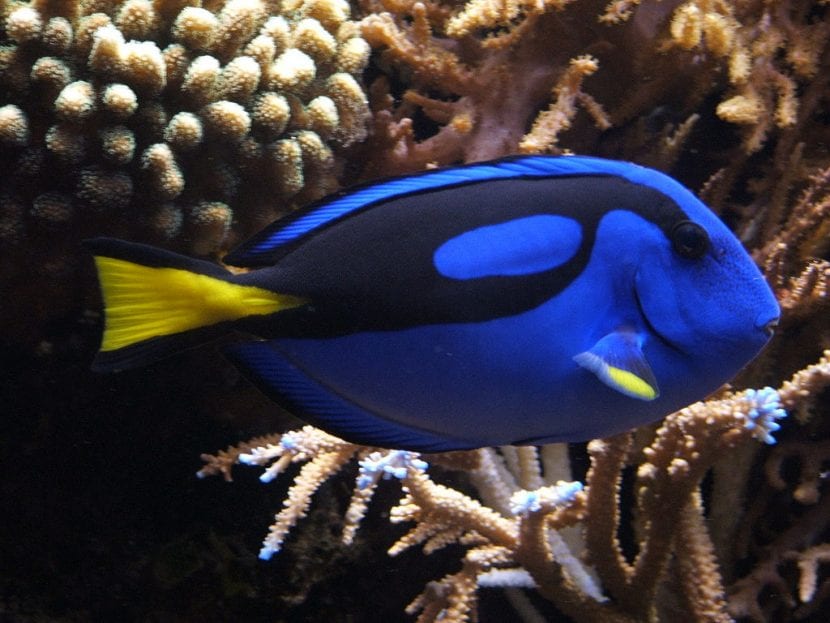
Our seas and oceans are full of incredibly wonderful beings that give their waters light and color. This wide range of species makes it very difficult to choose one of them as the most fascinating, however there is a unique fish that leaves no one indifferent. We talk about the popular surgeon fish, whose name is not very accurate due to its colorful and beautiful appearance.
In the article that you will read below, you will have the opportunity to learn much more about this animal: its behavior, characteristics, habitat, lifestyle, etc.
Habitat
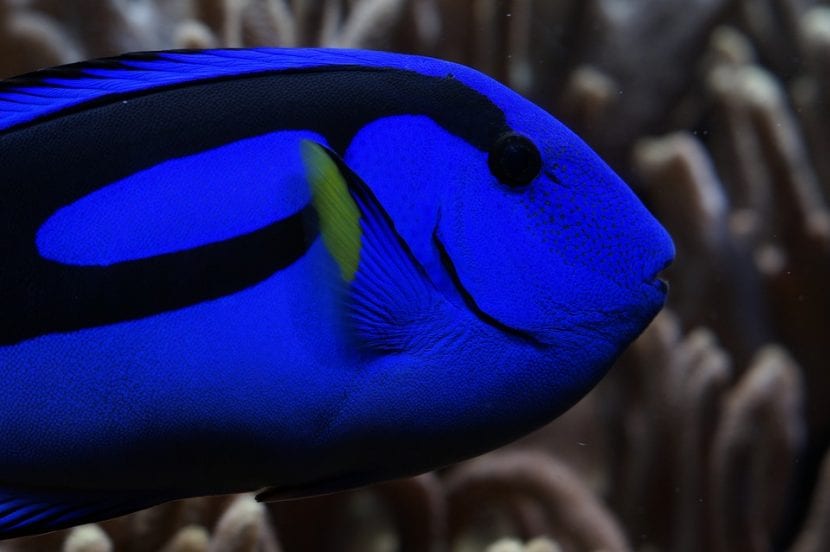
The surgeonfish does not choose to live in a particular area of the planet, but rather We can find it in areas of East Africa, Japan, Samoa, New Caledonia, etc. It is true that its origin took place in Australian waters, from which it spread to the rest.
It should be noted that, and as usually happens with those marine animals that are characterized by something is by their color and showiness, inhabits waters rich in coral reefs.
Surgeonfish characteristics
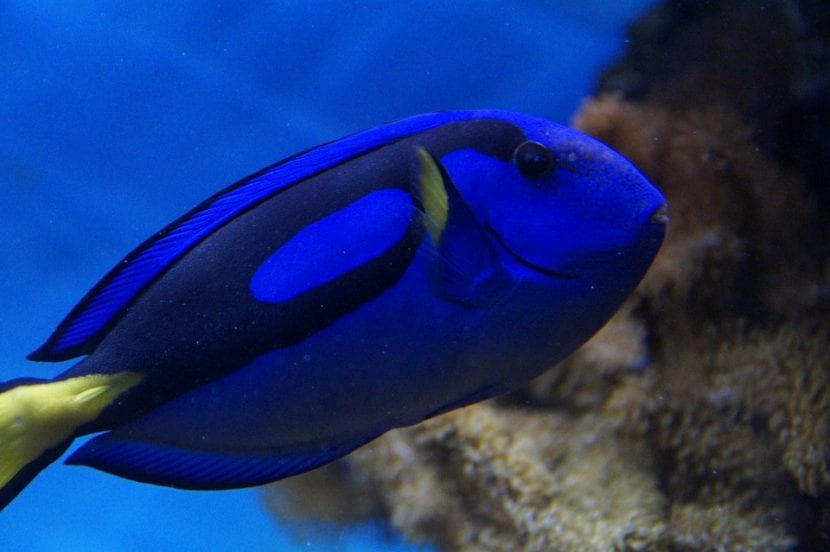
As we mentioned at the beginning, the surgeonfish (Paracanthurus hepatus) stands out above many other species de peces By its appearance.
It is not a very big fish in terms of size, about 30 centimeters in length, although specimens have been found that have exceeded 70 centimeters in length. Regarding its weight, in nature can reach 7-8 kilograms. It has a compressed body on its sides, of an intense blue color with two well-defined black stripes that cross it. In addition, it has a tail fin that is pigmented with a strong yellow hue. Another of its notable characteristics is its longevity. It is a fish that under normal conditions it can extend its life a few years, up to 15 specifically.
As far as its character is concerned, when it is young it is a rather friendly and not very aggressive fish, so it can coexist perfectly with other species in the same environment. Once he grows in age, his behavior is stronger and more defensive.
Finally, it should also be mentioned that there are several kinds of surgeonfish and that the aforementioned characteristics and details may vary from one to another.
Food
Since they thrive in areas as rich in biodiversity as coral reefs, surgeonfish enjoy a rich and varied diet.
Generally, they are omnivorous fish. When they are young they usually feed on plankton, while as they grow their food menu expands. They consume plants and algae that they find in the water, and also capture small insects, larvae and even eggs of other species. de peces.
Reproduction
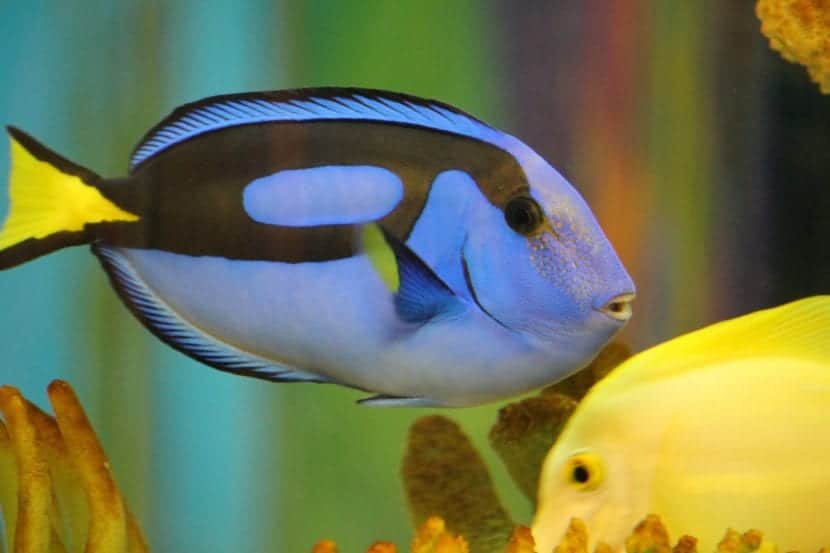
The surgeonfish, either male or female, reaches sexual maturity around two years of age, and the size of the individual plays a fundamental role.
The time of year chosen by the surgeonfish to reproduce is spring, since it is there where all the necessary conditions of temperature, etc. coincide.
The mating and courtship process is not very different from what we can observe in other species. de peces. The male chases the female until she catches his attention and then the act of fertilization takes place. It must be noted that there is hardly any obvious sexual dimorphism in surgeonfish, although it is true that when they go into heat, the males change to a light blue hue.
Once the female has deposited the eggs and they have been fertilized, the young will be born in a period of approximately three days, depending on the temperature to which they have been subjected during that time.
The surgeonfish in captivity
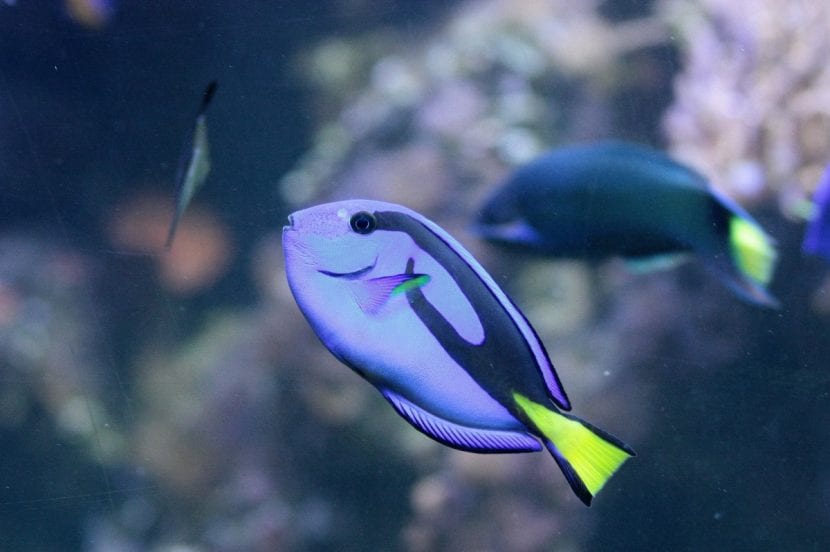
Its striking color and appearance that we have been referring to throughout the text has made the surgeonfish one of the most coveted aquarium pieces.
There is no doubt that providing our aquarium with the presence of these fish is adding extra value, but when making this decision we must take into account that the surgeonfish requires different care than the rest. de peces tropical.
Firstly, the aquarium or enclosure in which we install our surgeon fish must have a large water capacity and size. Also, this space must be properly decorated in order to simulate, as far as possible, a coral reef ecosystem, the free habitat of these fish.
They have to have high oxygen levels, a temperature that oscillates between 15 and 25 degrees Celsius, high luminosity and with a diet that includes a large percentage of plant-based nutrients and animal character.
When they are young it is not necessary for them to be alone but they can live in certainly numerous groups and with individuals of other species, but as they grow they become somewhat more solitary.
We hope we have been able to help you learn a little more about this beautiful fish that has become a true jewel of the waters of this planet.